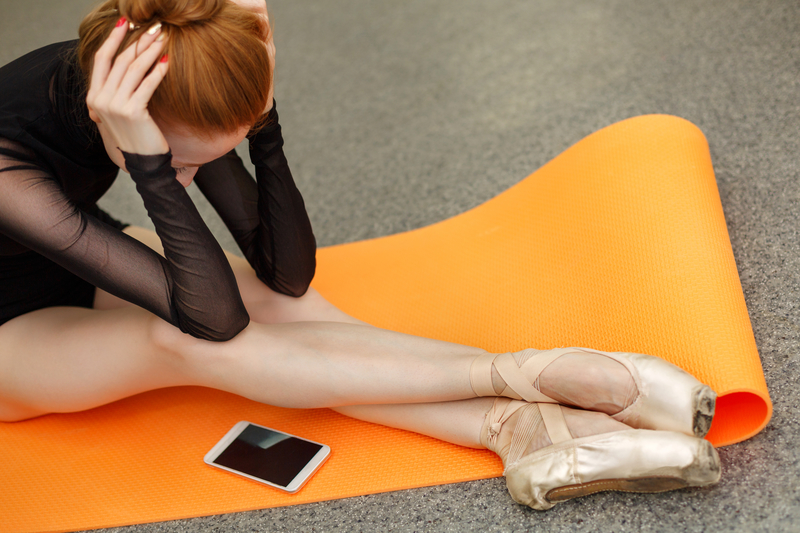Sometimes you may find yourself wondering why you’re not as flexible as your friends, or why you’re flexible in different ways. Everybody has his/her own personal potential for flexibility, which means just copying how other people stretch might not only be ineffective it could also be unsafe. Here are a couple of things to know that you can use to make smart choices about how to find your own best flexibility.
What is flexibility?
Flexibility refers to the range of motion (ROM) that you are able to achieve at joints based on the condition of your muscles and soft connective tissues. This is one of the categories of what we call mobility, which describes your overall ROM at a joint. Mobility also includes things like joint laxity, which has to do with the length and looseness of the ligaments holding your joints together. While flexibility can be beneficial, laxity generally contributes to instability.
What determines my flexibility?
Joint shape: As you can imagine, the shapes of your bones and how they fit together play a major role in mobility in general. The motion available at a joint is determined by anatomy.
Muscle length: Muscles have a range over which they can contract (shorten), relax (rest) and stretch (lengthen).
Connective tissue tension: Connective tissues that can affect ROM might include tendons, which can stretch somewhat along with muscles, fascia and ligaments that don’t really stretch.
Nervous system responses: There are receptors in your joints, muscles, tendons and skin that relay information about how much these various tissues are stretching, and your body reacts accordingly.
Age: Flexibility tends to diminish with age.
Sex: Women tend to be more flexible than men.
Activity level and type: Using muscles a lot can make them tight. But, as dancers, you’re already doing activity that will keep you pretty limber. Other high impact and high power activities can cause ROM restriction either through muscle tightness or size.
Can I change my flexibility?
Some of these factors that affect your flexibility are modifiable, while others are not. Some things like the shape of your joints and maximum muscle length are out of your control. Some things are largely out of your control, but they will still change naturally with age and activity. There are other things that you can potentially modify and will give you greater ROM, but they would be really detrimental. An example of this is over-stretching your ligaments so a joint becomes more lax. But happily, there are other things you can modify and that you can work on to reach your flexibility potential.
How can I reach my flexibility potential?
For the most part, factors like joint shape are quite similar from person to person, although when it comes to activities like dance, that might take someone to the limits of their ROM, small variations could make a difference. Of course, changing your joint shape is not a reasonable goal! The things you can take advantage of to affect your flexibility are some of the cool properties of muscle like response to heat and pressure, and also nervous system responses.
Take advantage of heat: If you didn’t know this before, know now that you should always warm up before you stretch. You can think of your muscles like clay – when it’s cold it’s really difficult to knead, shape and stretch, but when it’s warm you can easily make it into anything. When your muscles are warm, they can stretch more easily.
Take advantage of pressure: Muscles are supposed to contract to create tension and relax to release it when they need to according to the movement you must do. This can range from the muscles in our back producing constant tension to keep us upright in daily tasks, to intricate and specific muscle activity to control our handwriting. Sometimes muscles hold on to tension even when we don’t need it, and this can make us tight and even cause pain. Stretching may help with this, but so can massage! The use of pressure through things like massage and using a ball on pressure points can trigger muscles to release.
Take advantage of nervous system responses: Certain kinds of stretch can take advantage of neuromuscular reflexes to help muscles release tension and lengthen. Muscle will respond to certain kinds of stretch by tightening. This is a reflex and is meant to protect a joint and the soft tissues around it from getting over-stretched and torn. To get around that and do the kind of stretching that can increase your muscle resting length, you need to go into a stretch slowly and hold the position or move through it carefully for 30-60 seconds. If you stretch for less time, it can be helpful to prepare for movement but not necessarily for increased ROM, and there is no benefit to holding a stretch much longer than that. You should feel yourself breathe and relax into the stretch, feeling tension that eases over time so you can stretch further. Certain kinds of massage do this, too, because when you press into the muscle you’re stretching it, and working through that can get a muscle to let go.
While you can’t really change your flexibility, you can make smart stretching choices to reach your personal flexibility potential. Feel confident in your own potential, forget about copying your friends, and make a goal to practice safe and effective stretching for yourself. Then you will see the results!
By Leigh Schanfein of Dance Informa.

















